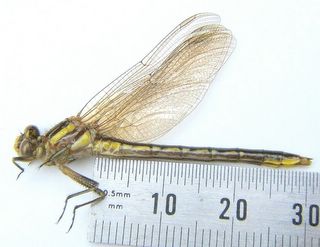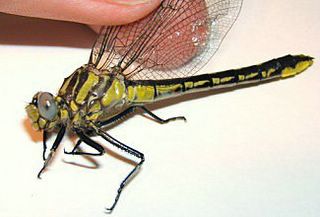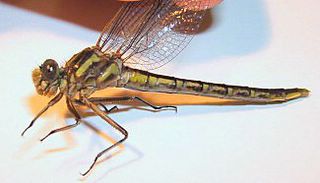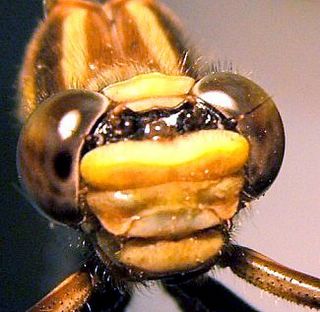30 May 2005
Our favorite retention ponds
29 May 2005
Lancet Clubtail

Teneral female Lancet Clubtail (Gomphus exilis)
Another stab at a decent voucher for Lancet Clubtail today at Sherwood Park. Of course, by the time I got off work and we got out there, the sunny, calm day had turned cloudy, windy, and threatened rain. This was the only dragonfly I saw, as we were walking back to the car, but it was the sought-after species, the dainty little Lancet Clubtail.

Sherwood Park, Sumpter Twp., Wayne Co., MI (northwest corner of Sherwood & Wear roads)
28 May 2005
I hate female gomphids! But love new records

Teneral female Pronghorn Clubtail (Gomphus graslinellus)
Off to Sherwood Park, a strange little township park used for fishing and off-road vehicles. It has a large pond surrounded by sandy two-tracks, fields, and woods. Stylurus snagged one of these snoozers, a female Dusky Clubtail, a dull species we found here last year.
Teneral female Dusky Clubtail (Gomphus spicatus)
Don't be impressed -- I can't recognize these in the field, or even in the hand. I had to suffer over some keys back at home. Female Gomphus all have quite different vulvar lamina (the structures under the 9th abdominal segment that hold eggs in place during ovipositing), and G. spicatus has a very distinctive convex, almost tri-lobed occiput, shown in the photo below.
Occiput of G. spicatus
Last, and least in size but not in importance, I netted a very teneral female gomphid that was smaller than the other two. By the time I got it home, it had "deflated." Nonetheless, the vulvar lamina and occiput were still distinguishable. That and the very small size (hindwing 25 mm and abdomen only 30 mm) helped me identify it as a Lancet Clubtail (G. exilis), a new county record, our 40th for Wayne Co. (although two are sight records), bringing the county checklist up to 90 species.
Not much else flying. The ubiquitous Eastern Forktail (Ischnura verticalis), a few Common Whitetails (Libellula lydia), and one teneral Calico Pennant (Celithemis elisa). The day quickly turned windy and cloudy, ending our adventures. But the official season seems off to a good start!
